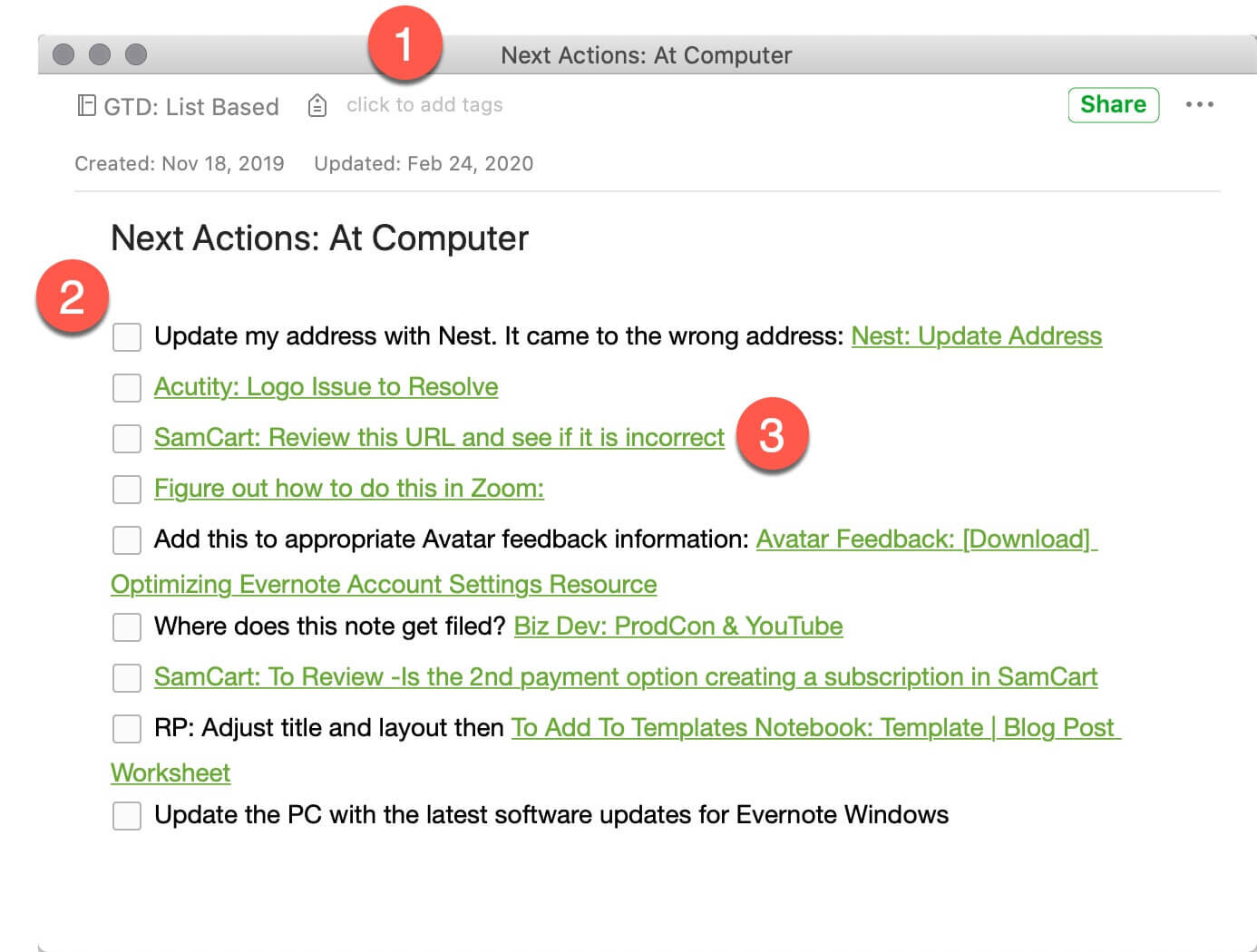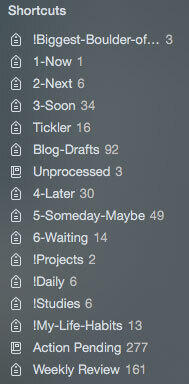

Instead, use a notebooks based approach to organizing and then adding tags as an additional layer to refine your retrieval of notes in specific workflows. However, this is different than using tags as the foundation or your GTD organizational system. And, I encourage the use of them for these purposes. You might want to pull a group of notes that live across separate notebooks or use tags to filter notes within a notebook. Tag approaches to organizing Evernote often encourage this through assigning multiple tags. Although there is personal choice applied to what context you track a next-action, the methodology doesn’t suggest you double/triple/quadruple-up contexts. Taggers want to be able to associate a note with more than one context, or more than one project.īut, where in GTD does David Allen advise organizing next-actions in multiple contexts? I haven’t found this to be part of the methodology. The constraint is often cited as the reason to use a tag-based approach to organizing your Evernote account. You can move a note from one notebook to another, but it only lives in one notebook at a time. Notes can only live in one notebook at a time.Ī note is only associated with one notebook “container” at a time. It’s referred to as the default notebook and is where new notes are created “by default”, unless you explicitly override the note creation location (how comfortable you are doing this is a significant indicator as to how Evernote-fluent you are). This constraint explains why all Evernote accounts start with a single notebook already in them. It’s not possible for the note to exist outside of a notebook. In other words, all notes have a notebook “container” they are associated with. In Evernote Free, Personal, and Premium, all notes live in a notebook. Here are the relevant Evernote constraints to understand that impact your GTD organization: NOTE CONSTRAINTS: When you understand the constraints of a tool (they all have them – even Evernote), you can design workflows that succeed within those constraints.
#Setting up evernote for gtd software
Then, learn the software and move forward organizing within the boundaries of the software. So stop trying to find the perfect app – there isn’t one! Instead, do your research, and then pick a powerful and promising tool (Evernote). The GTD app that David sketched out in 1994 still doesn’t exist. This creates fewer swipes and taps over time. This is because you should be using note links in your note-based lists. And, you have less navigating to do on mobile if you want to drill down to related notes. You have access to more information on a single screen so you scroll less. Screen utilization is more efficient on mobile too. And, if you use Evernote Tasks vs checkboxes to track your next actions in notes, you have a whole tasks view interface built specifically for efficiently viewing your tasks, no matter what note they live on.
#Setting up evernote for gtd full
Contrast this to a list based approach, you can see the full next action without further navigation. If you have a long note title (next action), you need to click on the note to read the entire next action.

Screen utilization is better: The middle column of Evernote desktop is narrow. When you use a notebook based approach to organizing, both the note title and note body are in play. With a tag based approach to list management, all of the notes that are simple “next-actions” only use the note title field. Note utilization is better: Notes have two “fields”: a note title, and a note body.
.jpg)
You use fewer notes: If you don’t have to create a note for each and every next action, you will have fewer notes. When compared, the two approaches to list making begin to illustrate what I call an “efficiency advantage” to a notebook based organizational approach for GTD in Evernote. In this example, you see, using the checkbox feature how:Ģ: Checkboxes are used to indicate open/completed itemsģ: Note links are used to provide navigation to supporting information/notesĪlthough both approaches successfully generate lists, each approach is fundamentally different.

When you use notebooks to organize your data in Evernote, lists are created on notes - either by using the checkbox feature, or Evernote’s Tasks feature.


 0 kommentar(er)
0 kommentar(er)
